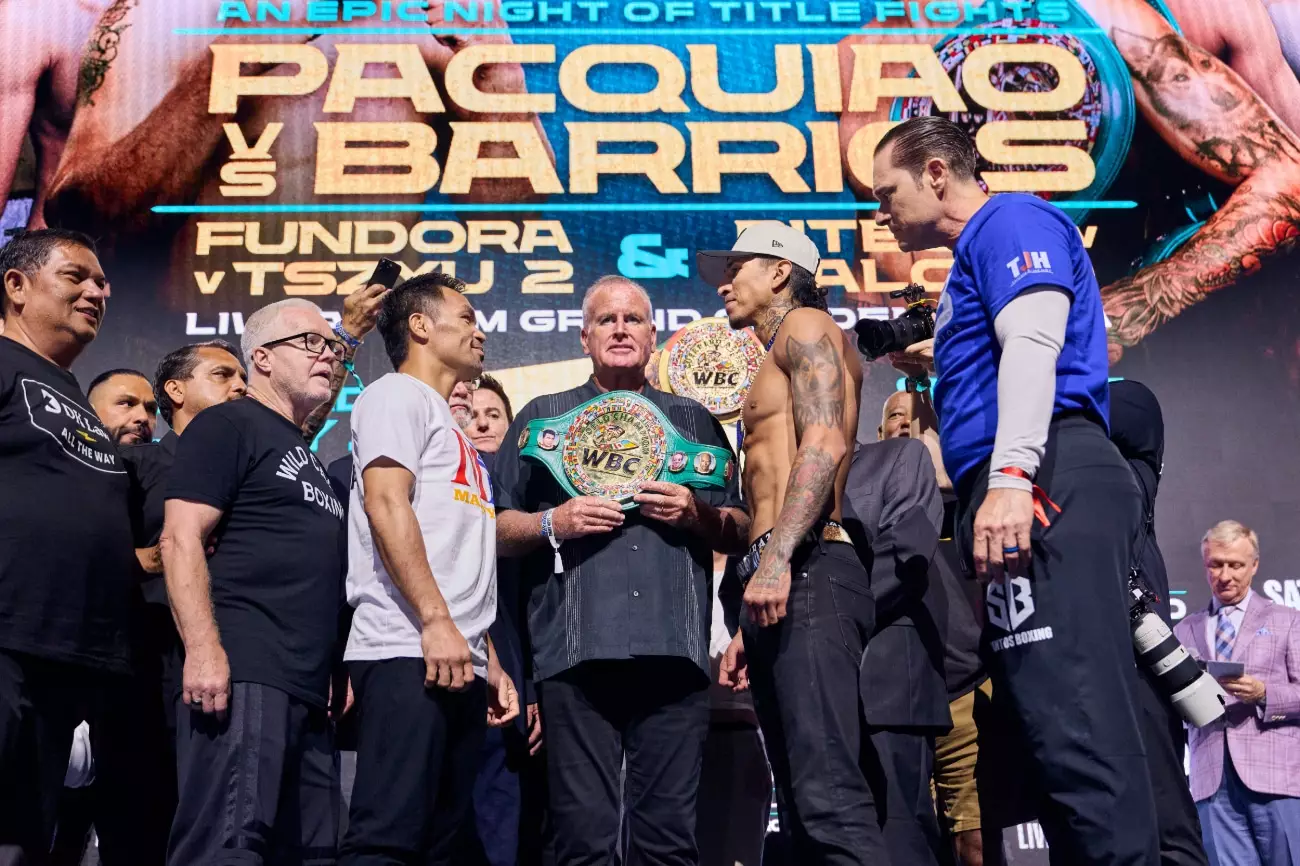Manny Pacquiao’s latest weigh-in in Las Vegas, tipping the scales at approximately 147 pounds, marks an audacious return to the boxing ring after a four-year hiatus. At age 46, his decision to re-enter elite competition sparks both intrigue and skepticism. While most seasoned fighters consider the inevitability of decline, Pacquiao’s resurgence appears more rooted in leveraging his legendary status than genuine athletic readiness. His return raises an important question: is this a strategic move driven by a desire to immortalize his legacy, or a reckless gamble ignoring his physical limitations?
Looking at Pacquiao through a critical lens reveals a complex picture. Yes, his career is decorated with titles across multiple weight classes, and his name remains a household entity. Yet, much of his recent form has been questionable. His last outing against Yordenis Ugas exposed vulnerabilities, with Pacquiao visibly aging and displaying signs of ring rust. Such wear and tear might be treatable through rigorous training and experience, but jumping straight into a title fight without tune-up bouts borders on irresponsibility.
The Politics of Fame and Financial Motivation
One cannot ignore the financial allure that fuels Pacquiao’s comeback. A reported $12.6 million payday for this fight underscores the harsh reality that the sport is driven as much by economics as athletic competition. Pacquiao’s decision to bypass the traditional ranking system and fight a reigning champion like Mario Barrios points to a trend among aging legends: tailoring their campaigns for maximum pay-per-view profits rather than competitive legitimacy.
This willingness to cut the line may diminish the sport’s integrity, painting Pacquiao’s return more as a spectacle than a testament to athletic resilience. The fighter’s reputation seems intertwined with a desire to relive past glories and cash in on his enduring fame, raising the question: is this truly about sporting achievement or personal branding? If experience and reputation dominate over skill and preparation, what does that say about boxing’s current state?
Evaluating the Opponent and the Fight’s Future
Mario Barrios, much younger and in his prime, presents a formidable challenge for the veteran. His recent statements imply a confidence rooted in youth, power, and recent performance. Yet, some analysts argue that Barrios’ victory can easily be made into a narrative of Pacquiao’s inevitable decline. The outcome could hinge more on subjective judging and the spectacle’s commercial interests than on skills or fairness.
Pacquiao’s claim of being “hungry” to fight again is sincere, but age, ring rust, and recent form suggest that he is ill-prepared for a high-caliber opponent like Barrios. His statement about wanting to entertain the fans feels more like a plea to justify risking his health for fleeting glory. Boxing has long been a brutal business, and this particular comeback smells of a shortcut rather than the culmination of a finely-tuned campaign.
The Larger Implications for Boxing’s Future
Pacquiao’s comeback exposes broader issues shadowing professional boxing. The sport has increasingly become a marketplace for nostalgia, pay-per-view spectacles, and lucrative fights cloaked in legacy rather than meaningful competition. When fighters like Pacquiao risk their health and reputation chasing money rather than development and strategic planning, it leads to a diluted product that fans should question critically.
Additionally, the possibility of a controversial decision—favoring Pacquiao due to his fame or the commercial stakes—undermines the sport’s credibility. Boxing’s legitimacy depends on transparent judging and fair opportunities for deserving contenders. When high-profile veterans sidestep proper ranking procedures, it risks sacrificing the sport’s integrity for immediate financial gain.
Manny Pacquiao’s return is a fascinating case study of how fame, money, and legacy intertwine in modern boxing. While there’s undeniable allure in witnessing a legend’s comeback, the risks—both personal and sporting—are considerable. It’s a gamble that, regardless of the outcome, will leave many questioning whether this chapter represents an inspiring revival or a perilous farewell marred by hubris.

